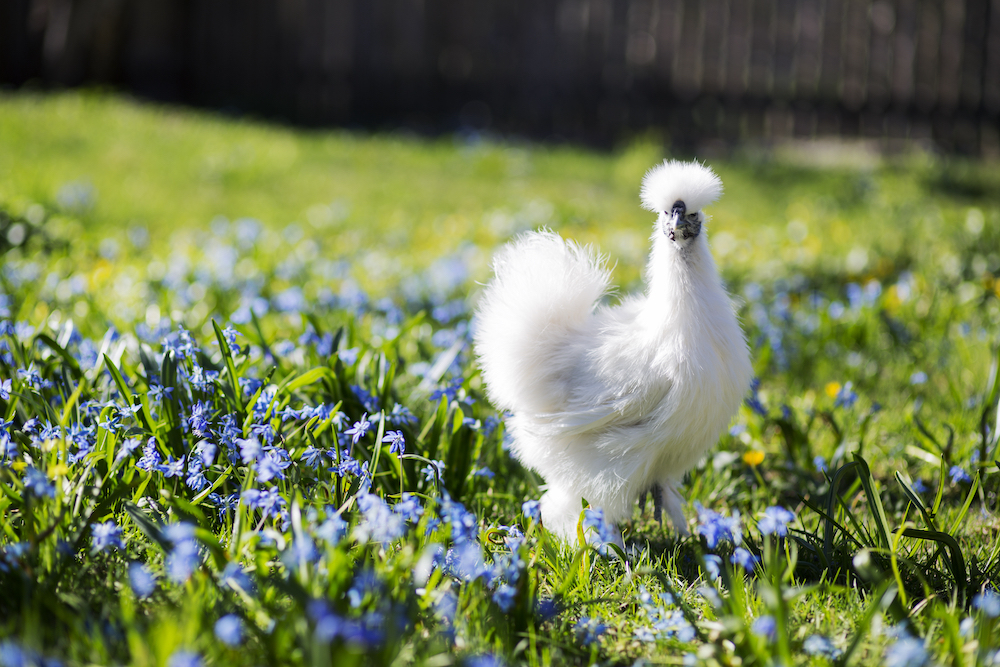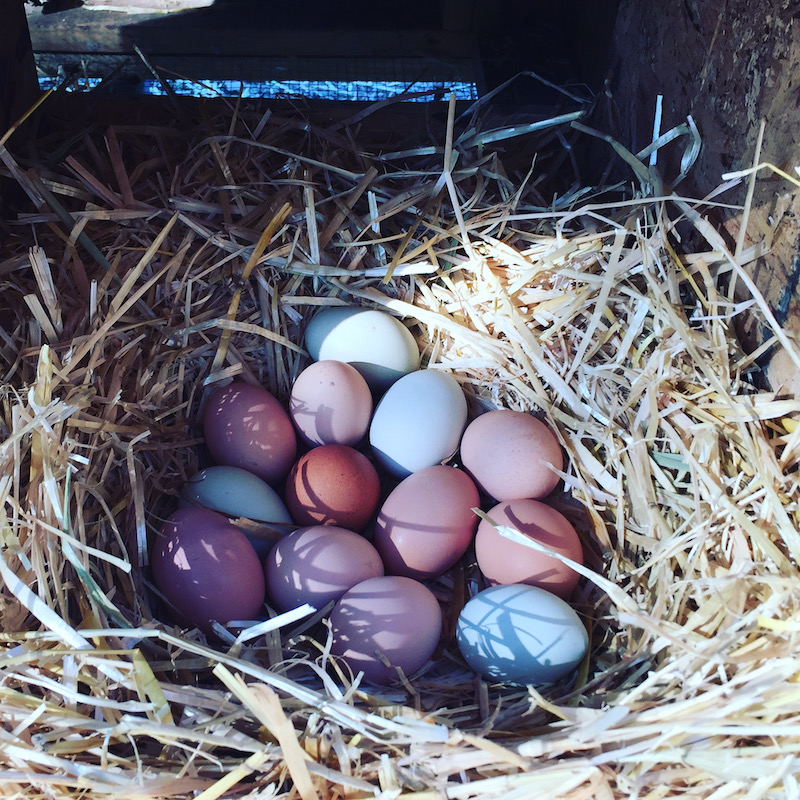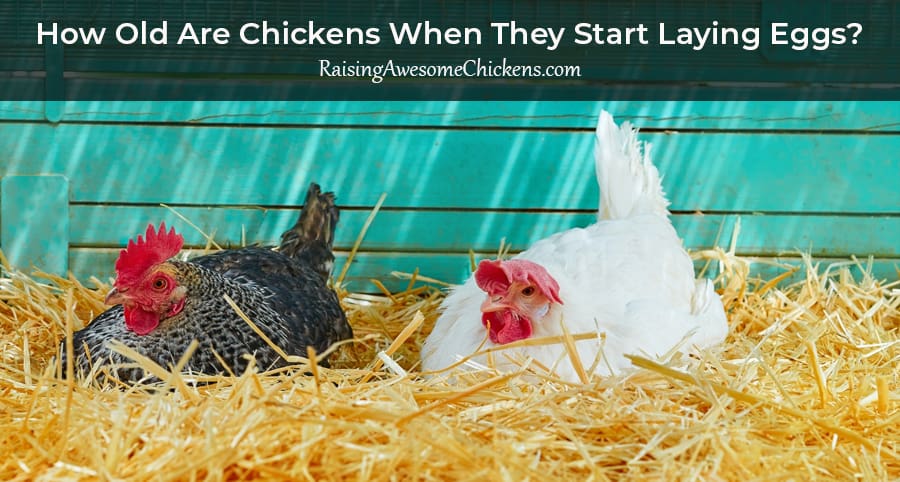Last Updated on September 10, 2021 by AwesomeChickens
When most people think of chicken eggs, they automatically assume that white eggs are the best and healthiest. These are the eggs we see stocked on the grocery store shelves, with brown being the second-most common. However, white and brown eggs are not the only eggs out there. You can find a few different colors coming from your chicken’s coop.
There are almost as many chickens who lay brown eggs as there are the ones that lay white. Some of the more prevalent backyard birds that produce brown eggs include Sussex, Australorp, Delaware, and New Hampshire Red.
Let’s take a closer look at other chickens known to lay brown eggs (as well as other colors) and what happens in the laying process that creates these different yet interesting colored shells.
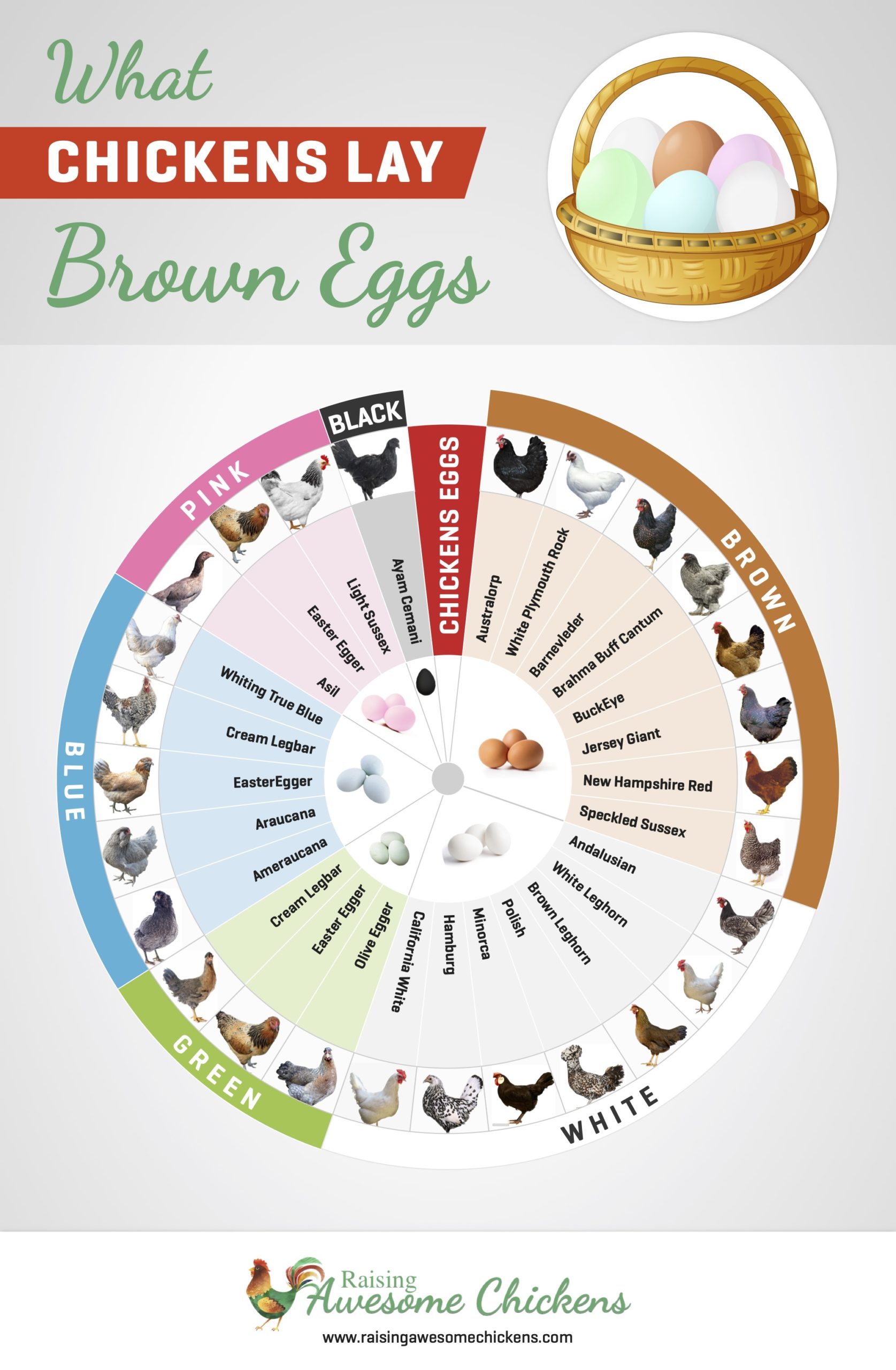
Share this Image On Your Site
Table of Contents
What Chickens Lay Brown Eggs
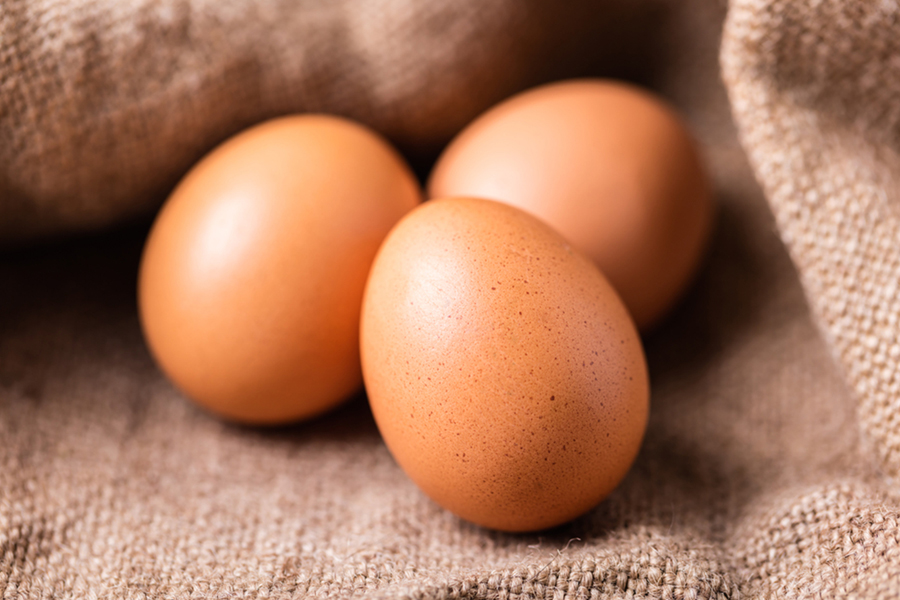
Some people believe that brown eggs are more nutritious than white eggs because they are less abundant, which is simply not true. Many chickens lay brown eggs but are not the most popular options when it comes to commercial farmers.
Australorp
The Australorp is a docile chicken that produces medium-sized brown eggs. It is well suited for smaller backyard coops and has is known to make great pets. Since the breed originated in Australia, they can withstand hot and humid temperatures without affecting egg production.
White Plymouth Rocks
The White Plymouth Rock chickens are a popular choice for many backyard hatcheries. These hens are hardy and can thrive well in hot and cold climates, making them versatile in living locations.
These chickens are not only known for their large brown eggs but also make great meat birds.
Barnevelder
The Barnevelder bird, also known as Barneys, are friendly chickens that are both attractive and lay pretty eggs. These birds lay dark-chocolate colored eggs that can at times have specks freckled about.
These birds love to roam and would make the perfect chicken for any free-range farm.
Brahma Buff Cantum
The Brahma Bantam is docile and easy to care for birds. These chickens are on the smaller side and can add a little pizazz to your coop with their array of colors and feather designs. They are known for laying around 3 brown eggs each week, and while other chickens may take the winter off, Brahmas will keep going strong.
Buckeye
The Buckeye chicken was bred to maintain very cold winters and are hardy chickens who will not have any problems providing eggs all year long. These chickens usually lay around 3-4 medium brown eggs each week.
These birds do not necessarily need to be free-ranging as long as their coops provide plenty of room to roam.
Jersey Giant
The Jersey Giant was given its name for a very good reason. These birds are one of the largest chicken breeds in the world. They are known for being decent egg layers producing roughly 2-4 eggs every week. Sadly, due to their size, they are also known for crushing their eggs, making it hard for them to hatch baby chicks, even when they choose to go broody.
New Hampshire Red
The New Hampshire Red chickens lay around 3-4 light brown eggs every week. They are large birds that are great brooders, making great mothers once their eggs hatch. These chickens are not as popular as they once were but would make a great addition to the right coop.
Speckled Sussex
The Speckled Sussex is a great bird for any chicken coop. They are friendly and will have no problems following you around the yard. These birds are known for their frequent egg production, laying 5-6 large brown eggs every week.
What Chickens Lay Blue Eggs?
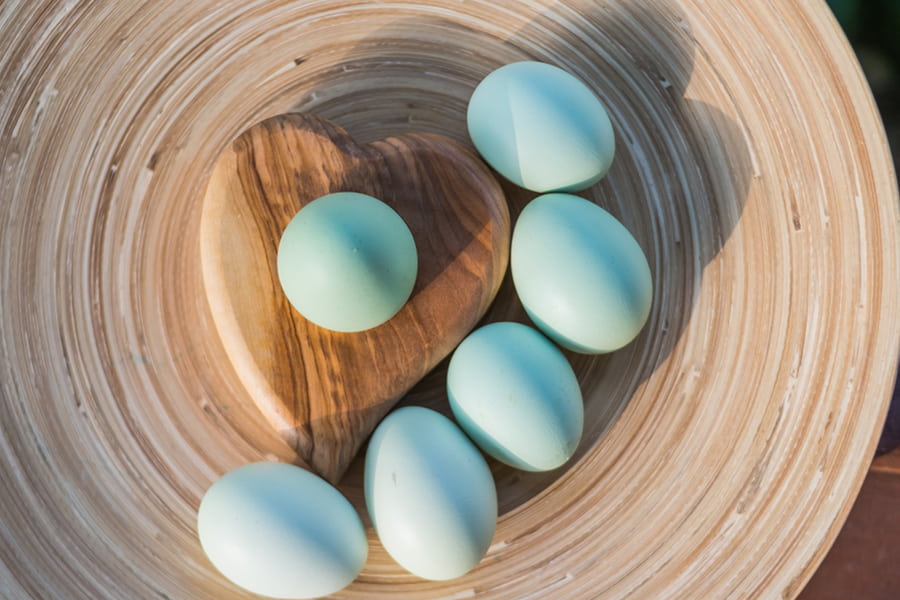
Blue eggs are beautiful to look at and rare to find. If you plan to purchase a chicken known for laying a blue-tinted egg, you are probably going to pay much higher prices. Depending on your backyard setup, they just might be worth it.
Ameraucana
Ameraucana (NOT Americana) is a rarer species of backyard bird and will cost a lot more than your average hen. They can easily handle cold winters but are not fond of warmer temperatures. These beauties will lay around 3 medium light-blue eggs every week.
Araucana
The Araucana chicken is native to South America and was a product of the Colloncas and Quetros birds. These are very rare chickens and can only be obtained through a breeder. They are less than friendly and require a lot of maintenance if you want them for their beautiful blue eggs, which they produce about 4-5 each week.
Easter Egger
The Easter Egger is also known as the rainbow chicken. They can lay eggs of many colors, from blue to pink and anywhere in between. This type of chicken can produce about five eggs each week, and the eggs are extra-large.
Cream Legbar
The Cream Legbar bird is an auto-sexing chicken, so distinguishing males from females straight from hatchlings is very easy to do. These chickens are very hardy and predator savvy making them great free-range birds.
You can expect around three to four bright blue eggs from these hens each week, and their eggs are medium in size.
Whiting True Blue
These birds were bred solely for their blue eggs and hackle feathers. They are friendly and very curious creatures who can fly very well. These are beautiful chickens that will produce around four blue eggs every week.
What Chickens Lay White Eggs?
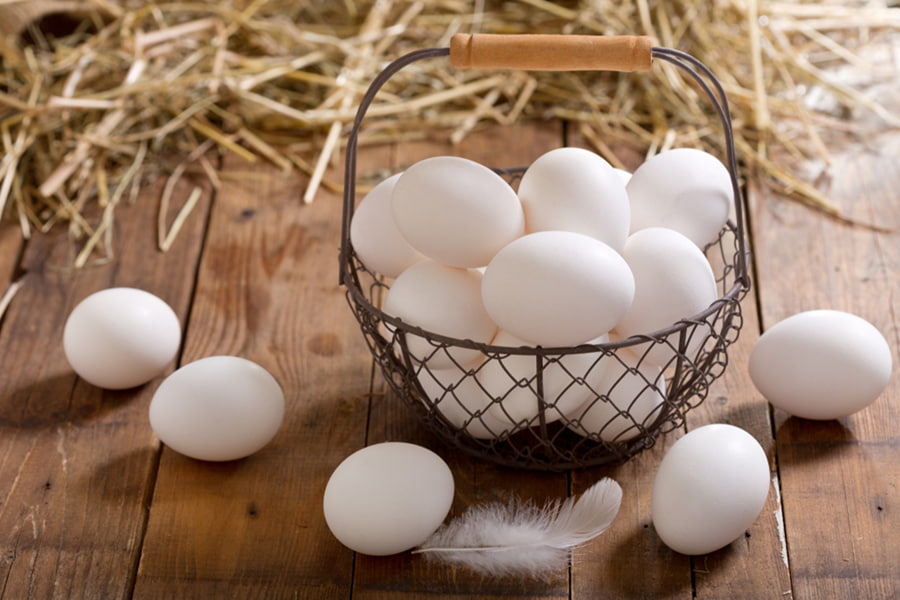
White eggs are the most common color sold in stores all across the states. The White Leghorn and Brown Leghorn are the go-to choices for commercial farmers because they lay so many eggs per year. However, they are not the only chickens who lay primarily white eggs.
Andalusian Chicken
This independent chicken needs plenty of space to move around freely and will not do well in a coop. They are great egg layers and produce around three large white eggs each week.
These are not your average backyard bird and are not all that friendly. They are also fairly rare to find.
White Leghorn
The White Leghorn chicken was bred specifically for egg-laying purposes. They produce an extremely large amount of white large-extra-large eggs each year or, on average, four to five each week.
Because of their excessive egg output and easy-going nature, they are the most popular breed for the egg market. They are great foragers and very active birds.
Brown Leghorn
Known for being the second-largest white egg layer in the commercial and backyard coop world. These chickens are not for those who want eggs and a pet. Although this bird is not necessarily aggressive, they tend to steer clear of humans and enjoys roaming free.
Polish Chickens
Although the Polish chicken is well known for its white medium-large eggs. The egg production isn’t very reliable, and you are only going to get around 100-150 from them each year. If you’re looking for a great chicken to keep as a friendly pet, this is the one for you. If it’s eggs you are after, you may want to keep looking.
Minorca Chickens
Minorca Chickens lay some of the largest white eggs available today. They are a very friendly breed of bird and enjoy being handled. They are dual-purpose birds, meaning they are raised for eggs and meat.
Although these birds were once one of the best egg layers in town, breeders slowed down their rates by attempting to create a better appearance. You will usually get three large white eggs from these hens each week.
Hamburg Chicken
The Hamburg chicken is a smaller bird that produces small white eggs roughly three times each week. They are great backyard birds if you aren’t interested in handling them often. These birds are not mean but do not enjoy human interaction.
These chickens will produce 200 medium-sized eggs each year or four eggs per week.
California White Chicken
The California White Chicken is a great backyard chicken for most types of coops. They are winter hardy but can manage well in warmer temperatures. They typically lay about 220 large white eggs every year or four to five eggs each week.
What Chickens Lay Green Eggs?
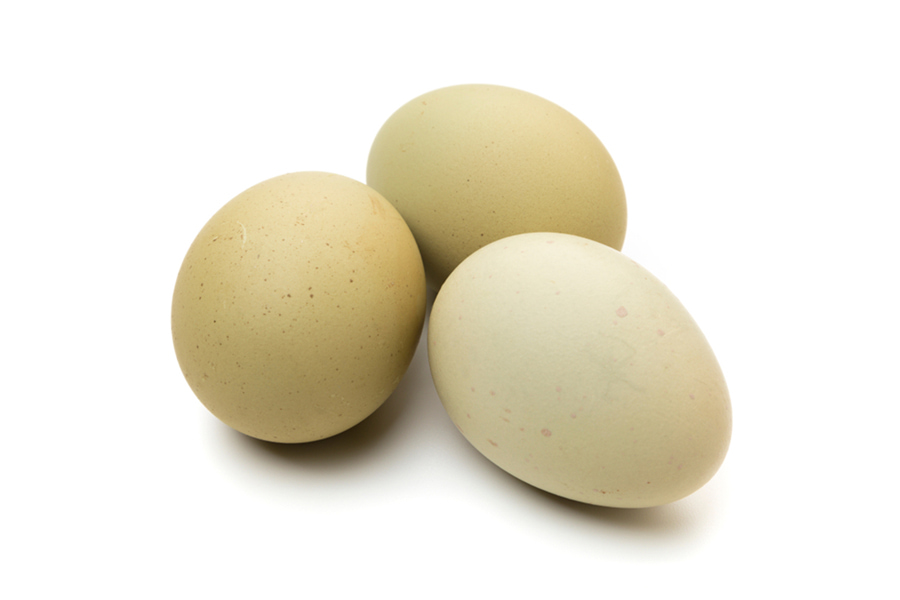
Green Eggs are extremely rare and not laid by many chickens. Many chickens that lay blue eggs are also known for laying a green colored egg as well, like the Easter Egger and the Cream Legbar chickens.
Olive Egger
The Olive Egger produces 180-200 large green eggs per year. These chickens are very docile and will get along with many other chicken breeds. Although these birds will lay a good amount of eggs, they are also great brooders meaning your egg production may not be as large as you hope for.
Why Are There Different Colored Eggs?
From the very start of the egg production cycle, all eggs are white. They remain white throughout the process until the final layer of the shell is applied to the egg before the chicken lays is. This layer is called the bloom.
Some chickens inherently have genes that provide pigment to their bloom, creating different colors on some eggshells.
Can You Predict Egg Color?
There are a few ways to tell what color your eggs will be, besides basing your assumptions on the breed of chicken you own.
Most chickens that lay white eggs will have white earlobes. Hens that have red earlobes tend to lay brown eggs. There are a few exceptions to this rule; however, you can identify the majority of common farm chickens can this way.
Other egg colors
You will notice that white and brown eggs are the most common types of chicken eggs out there. However, blue and green are not the only vibrant shades chickens can lay. The Ayam Cemani chicken is black from beak to toe and lays beautiful black eggs.
The Asil chicken is known for laying a light pink colored egg, and the Easter Egger can also lay pink shades as well as blue and green.
Are White Eggs in the Stores Bleached?
A popular theory about the bright white eggs on the store’s shelves exhibit is facilities bleaching the egg before packaging and distributing, which is not at all true. The eggs in those cartons are white because the chickens laid them that way.
There are cleaning and sanitizing processes done before the eggs hit the market but are followed by strict USDA guidelines and have nothing to do with the color of the eggs you purchase.
Do not wash your eggs after purchase because the porous shells can absorb bacteria in the water you use and contaminate the inner egg.
Summing Things Up
There are over 50 recognized chicken breeds out there, some having a bantam version and others that are not yet known. It is hard to give a full list of all breeds that produce specific egg colors when many can produce multiple colors or are cross-bred to create a new breed.
However, the above list provides a good idea of where to go to get the specific egg color you are looking for. You must check with the breeder to ensure you are getting the chicken you want, as many of them can look similar. and those without experience may confuse one with the other.


